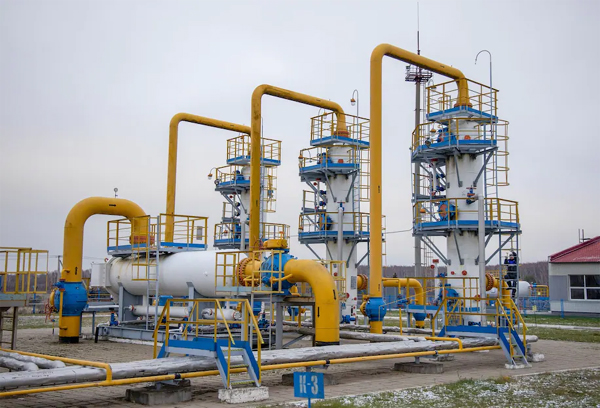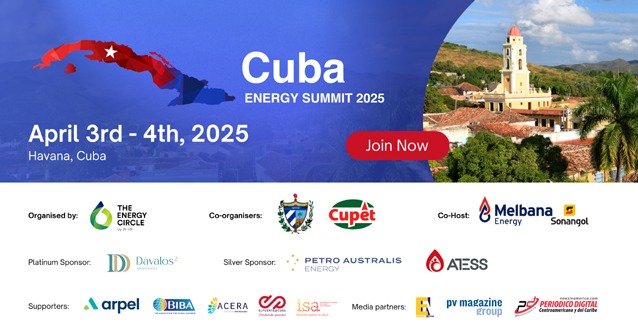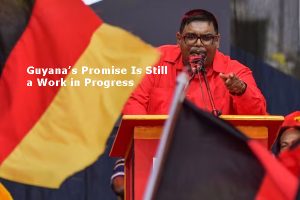Russia is restricting supply westward and tweeting reminders of the perilous gas situation faced by Europe.

On Christmas eve, Gazprom, the Russian state-owned natural gas giant, tweeted a rather unfestive message: Gas inventories in Europe were depleting quickly. Since then, Gazprom has been reminding the world of the trend every few days. “It should be noted that gas reserves in Europe’s UGS [underground gas storages] are currently at their lowest for the season in the long history of observation,” it tweeted again earlier this week.Gazprom is right. On Thursday, Gas Infrastructure Europe, an industry association, announced that European gas inventories had dropped below the key 50% mark of total capacity, down to 49.33% as of Jan. 12. It’s the earliest the half-empty mark has ever been reached, beating the previous record by seven days. Typically, Europe’s gas inventories don’t fall to half until about early-to-mid February. During some mild winters, the inventories don’t sink below midpoint until early March.
The biggest ally of Europe in the gas crisis has so far been the weather. Only a month ago, many feared the 50% level would be breached on New Year’s day. Unseasonal temperatures cut consumption and helped to avoid that scenario. The arrival of liquefied natural gas (LNG) cargos also alleviated the crunch. Some big energy consumers — like fertilizer companies, glass manufacturers and aluminum and zinc smelters — also shut down production.
With nearly half of January gone, there are few meteorological signs of the feared cold snap. Indeed, if the current forecasts hold, temperatures may rise above seasonal levels during the second half of the month.It could still get colder, but typically Jan. 28 marks an inflection point in European winter, when the season starts to gently warm, according to 30-year average trends. Each day without a cold snap after that date is a day closer to spring — and relief for the gas market. Still, prices for European gas — and electricity — remain elevated, with benchmark gas trading around 75-to-80 euros ($86-to-$91.74) per megawatt hour, about 300% above the 2010-2019 average but well below a peak of nearly 188 euros per MWh set in December.
Gazprom is the main reason why – and not because of its tweets. Russia has kept the pressure on the European gas market by turning down supplies. The Yamal-Europe pipeline, a major conduit of Russian gas into Germany, hasn’t shipped a single molecule of gas for 23 consecutive days. Flows via other pipelines remain well below normal levels. Gazprom says it’s meeting all its contractual obligations with customers in Europe. And the customers agree. What the Russian energy behemoth isn’t doing, as it does normally in winter, is to offer gas on the spot market above and beyond its long-term contracts.

Why not is a matter of hot debate. Some argue the company doesn’t have the gas to sell because domestic demand is running very high and exports to China are rising. Others, however, believe Russia is manufacturing a gas crisis for political leverage over Ukraine.What’s clear is that with half of January gone, and the weather indicating more mild temperatures until February, the biggest risk is no longer a cold winter — but what Russia can do to supplies.
Javier Blas is a Bloomberg Opinion columnist covering energy and commodities. He previously was commodities editor at the Financial Times and is the coauthor of “The World for Sale: Money, Power, and the Traders Who Barter the Earth’s Resources.” @JavierBlas. Energiesnet.com does not necessarily share these views.
Editor’s Note: This article was originally published by Bloomberg Opinion, on January 13, 2022. All comments posted and published on EnergiesNet.com, do not reflect either for or against the opinion expressed in the comment as an endorsement of EnergiesNet.com or Petroleumworld.
Original article
Use Notice: This site contains copyrighted material the use of which has not always been specifically authorized by the copyright owner. We are making such material available in our efforts to advance understanding of issues of environmental and humanitarian significance. We believe this constitutes a ‘fair use’ of any such copyrighted material as provided for in section 107 of the US Copyright Law. In accordance with Title 17 U.S.C. Section 107. For more information go to: http://www.law.cornell.edu/uscode/17/107.shtml.
energiesnet.com 01 13 2022












